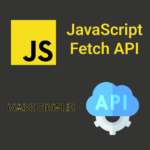MongoDB is a popular open-source NoSQL document-oriented database that is designed for scalability, flexibility, and performance. It stores data as flexible, JSON-like documents that can have different structures and fields, making it suitable for handling unstructured and semi-structured data. It’s also supports dynamic queries, indexing, and aggregation, which makes it easier to extract insights from large and complex datasets.
Here are some key features of MongoDB:
- Dynamic Schema: MongoDB uses a flexible document model that allows the schema to change over time, making it easier to store and retrieve complex data structures.
- Horizontal Scalability: It is designed to scale horizontally across multiple nodes and clusters, providing high availability and performance for large-scale applications.
- Rich Query Language: MongoDB provides a rich query language that supports complex queries, indexing, and aggregation, allowing for efficient data retrieval and analysis.
- Native JSON Support: MongoDB uses a native JSON data format, which makes it easy to integrate with web applications and other modern technologies.
- Automatic Sharding: MongoDB can automatically partition data across multiple nodes and clusters, providing transparent and automatic sharding for high scalability and performance.
It has a wide range of use cases, including web and mobile applications, content management systems, IoT, and real-time analytics. It has a strong developer community and provides many tools and drivers for various programming languages, making it easy to use and integrate with modern technologies.
MongoDB Code
It is a popular open-source NoSQL document-oriented database that stores data as flexible, JSON-like documents. Here is an example of how to use MongoDB with Python:
# Import the pymongo library
import pymongo
# Create a client for the MongoDB server
client = pymongo.MongoClient("mongodb://localhost:27017/")
# Select a database
db = client["mydatabase"]
# Create a collection
col = db["customers"]
# Insert a document
doc = { "name": "John Doe", "address": "123 Main St", "age": 30 }
col.insert_one(doc)
# Find documents
query = { "name": "John Doe" }
result = col.find(query)
# Print results
for doc in result:
print(doc) In this example, we first create a client for the MongoDB server and select a database called “mydatabase”. We then create a collection called “customers” and insert a document with some fields.
Next, we perform a query to find documents with the name “John Doe”, and then loop through the results and print each document.
This is a simple example, but MongoDB provides many more advanced features, such as indexing, aggregation, replication, sharding, and more, that allow for efficient and scalable data storage and retrieval. MongoDB can be used with many programming languages, and provides a wide range of tools and drivers to make it easy to use and integrate with modern technologies.






